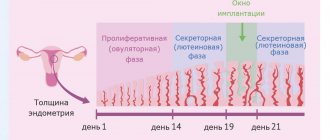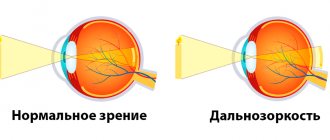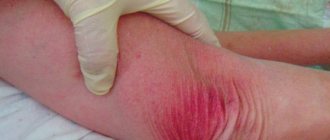Ketoacidosis in diabetes is a condition that occurs when this disease decompensates due to an increase in the concentration of glucose and ketone bodies in the blood. It is characterized by the development of thirst, an increase in the volume of daily diuresis, dry skin, the presence of an acetone odor in the exhaled air and abdominal pain. On the part of the central nervous system, patients, as a rule, note headaches, increased irritability or lethargy, decreased performance, and lethargy. Ketoacidosis can be diagnosed based on laboratory biochemical tests.
Symptoms of the disease
This pathology occurs in type I diabetes mellitus, but can also occur in type II diabetes. Therefore, at the first signs of illness, immediately consult a doctor to prescribe treatment.
Symptoms include:
- Abdominal pain.
- Vomit.
- Cardiopalmus.
- Acetone smell on your breath (or other unusual odor).
- Dehydration of the body (dehydration).
- Disorientation in space, confusion.
- Unconsciousness (or coma).
Ketone bodies are found in urine.
What to do if you suspect ketoacidosis?
If, based on the symptoms listed above, you suspect that you or a relative have ketoacidosis, then you need to seek medical help urgently!
If you have a glucometer, then measure your blood sugar - if the numbers are above 14 mmol/l, your suspicions are well founded.
If there is a person with diabetes in the family, it is useful to have at home not only a glucometer, but also a package of test strips for determining acetone in urine. This will help identify ketoacidosis at the very beginning and seek help in a timely manner.
Causes of the pathological condition
Ketoacidosis appears in the following cases:
- When a very low dose of insulin is administered.
- Eating large amounts of carbohydrates.
- Missing a dose of insulin.
- Excessive physical activity.
- Severe stress.
- Excessive alcohol consumption.
- The presence of an infectious disease.
- Using ecstasy or cocaine.
When blood sugar levels are significantly higher than normal, hyperglycemia occurs in the body and the number of ketone bodies increases.
Who can develop ketoacidosis?
- Type 1 diabetes, especially in children, is often recognized when the patient is admitted to the hospital in a state of ketoacidosis. The patient feels unwell several days or even several weeks before, but does not suspect that the poor health is due to increased blood sugar.
- Ketoacidosis develops in all patients with type 1 diabetes if they stop taking insulin. As a rule, less than a day passes from stopping insulin administration to the development of ketoacidosis.
- In patients with type 1 and type 2 diabetes mellitus with severe infections, purulent processes, heart attacks, strokes and other severe concomitant diseases.
- In patients with type 1 diabetes mellitus during pregnancy.
- In case of inadequate treatment of type 1 diabetes mellitus - infrequent control of blood sugar, skipping insulin doses, poor diet, use of spoiled or expired insulin.
Most patients with type 1 diabetes will experience diabetic ketoacidosis at least once during their lifetime.
Mechanism of development of diabetic ketoacidosis
If there is a lack of insulin, the body cannot convert glucose into the energy it needs. Fat consumption begins. When they are used, ketone bodies accumulate in the body, the content of which rapidly increases. Ketone bodies cannot enter the blood due to the lack of insulin. They pass through the kidneys into the urine. A high content of by-products quickly poisons the body and leads to complications.
A patient who knows about the causes, symptoms, methods of prevention and treatment can avoid the occurrence of diabetic ketoacidosis.
Symptoms of ketoacidosis
Every patient with a history of this disease should be familiar with the clinical picture of decompensated diabetes mellitus. Among the main symptoms, special attention should be paid to:
- Increased thirst. This sign is the first alarm bell. If the concentration of glucose and ketone bodies is disturbed, a person begins to drink more water without getting full.
- Increased daily diuresis. Frequent visits to the toilet due to an increased urge to urinate are a symptom of the initial stage of ketoacidosis, since as it progresses, the amount of urine produced will rapidly decrease.
- The appearance of a specific odor. With the development of this pathological condition, the smell of acetone may be felt in the exhaled air.
- Drowsiness, decreased ability to work. Patients become slow and lethargic.
- Headache and slight dizziness.
As ketoacidosis progresses, loss of consciousness may occur.
Worsening of the patient's condition and decreased photoreaction of the pupils may signal the development of ketoacidotic coma.
How to check your ketone levels?
As DKA develops, symptoms appear quickly. If one or more signs are present, blood and urine are tested for ketone bodies. They appear in the blood much faster than in the urine. To prevent poisoning of the body, perform the following measures:
- A blood test is performed to check for the presence of ketone bodies. If your home glucose meter can do this, use it. All you have to do is insert the required test strip.
- Study the result obtained. A value up to 0.6 mmol/l does not require any action. This indicator is considered the norm. An average level of 0.6-1.5 mmol/l indicates the beginning of the formation of ketone bodies in the body. Over the next 1.5-2 hours, you may need the help of a doctor. A high content of ketone bodies (more than 1.5 mmol/l) requires immediate medical attention and behavioral caution.
The attending physician is informed of the diagnosis and adheres to the prescribed recommendations.
Publications in the media
Diabetic ketoacidosis (DKA) is an emergency condition resulting from absolute (usually) or relative (rare) insulin deficiency, characterized by hyperglycemia, metabolic acidosis and electrolyte disturbances. The extreme manifestation of diabetic ketoacidosis is ketoacidotic coma. Statistical data. 46 cases per 10,000 patients suffering from diabetes. The predominant age is up to 30 years.
Risk factors • Late diagnosis of diabetes • Inadequate insulin therapy • Concomitant acute diseases and injuries • Previous dehydration • Pregnancy complicated by early toxicosis.
Etiopathogenesis
• Hyperglycemia. Lack of insulin reduces glucose utilization in the periphery and, along with excess glucagon, causes increased glucose formation in the liver due to stimulation of gluconeogenesis, glycogenolysis and inhibition of glycolysis. Protein breakdown in peripheral tissues provides a supply of amino acids to the liver (the substrate for gluconeogenesis).
• As a result, osmotic diuresis, hypovolemia, dehydration and excessive excretion of sodium, potassium, phosphate and other substances in the urine develop. A decrease in blood volume leads to the release of catecholamines, which interfere with the action of insulin and stimulate lipolysis.
• Ketogenesis. Lipolysis, resulting from a lack of insulin and an excess of catecholamines, mobilizes free fatty acids from storage in adipose tissue. Instead of re-esterifying incoming free fatty acids into triglycerides, the liver switches their metabolism to the formation of ketone bodies •• Glucagon increases the level of carnitine in the liver, which ensures that fatty acids enter the mitochondria, where they undergo b-oxidation to form ketone bodies •• Glucagon reduces the content of malonyl in the liver -CoA, fatty acid oxidation inhibitor.
• Acidosis. Increased production of ketone bodies (acetoacetate and b-hydroxybutyrate) in the liver exceeds the body's ability to metabolize or excrete them •• Hydrogen ions of ketone bodies combine with bicarbonate (buffer), which leads to a drop in serum bicarbonate and a decrease in pH •• Compensatory hyperventilation leads to decreased paCO2 •• Due to increased levels of plasma acetoacetate and b-hydroxybutyrate, the anion gap increases •• The result is metabolic acidosis with an increased anion gap.
The clinical picture of ketoacidotic coma is determined by its stage.
• Stage I (ketoacidotic precoma) •• Consciousness is not impaired •• Polydipsia and polyuria •• Moderate dehydration (dry skin and mucous membranes) without hemodynamic disturbances •• General weakness and weight loss •• Deterioration of appetite, drowsiness.
• Stage II (beginning ketoacidotic coma) •• Stupor •• Kussmaul-type breathing with the smell of acetone in the exhaled air •• Severe dehydration with impaired hemodynamics (arterial hypotension and tachycardia) •• Abdominal syndrome (pseudoperitonitis) ••• Tension of the muscles of the anterior abdominal wall ••• Symptoms of peritoneal irritation ••• Repeated vomiting in the form of “coffee grounds” is caused by diapedetic hemorrhages and the paretic state of the vessels of the gastric mucosa.
• Stage III (complete ketoacidotic coma) •• No consciousness •• Hypo- or areflexia •• Severe dehydration with collapse.
Laboratory tests • Increase in blood glucose concentration to 17–40 mmol/l • Increase in the content of ketone bodies in the blood and urine (nitroprusside, which reacts with acetoacetate, is usually used to determine the content of ketone bodies) • Glucosuria • Hyponatremia • Hyperamylasemia • Hypercholesterolemia • Increase in urea content in the blood • Serum bicarbonate <10 mEq/l, blood pH is reduced • Hypokalemia (hyperkalemia is possible at the initial stage) • Reduced paCO2 • Increased plasma osmolarity (>300 mOsm/kg) • Increased anion gap.
Diseases affecting results. With concomitant lactic acidosis, a lot of b-hydroxybutyrate is formed, so the acetoacetate content is not so high. In this case, the reaction with nitroprusside, which determines only the concentration of acetoacetate, may be weakly positive even with severe acidosis.
Special studies • ECG (especially if MI is suspected). Typically, sinus tachycardia is detected • Chest X-ray to rule out respiratory tract infection.
Differential diagnosis • Hyperosmolar non-ketoacidotic coma • Lactic acid diabetic coma • Hypoglycemic coma • Uremia.
TREATMENT
Mode • Hospitalization in the intensive care unit. Bed rest • The goals of intensive care are to accelerate the utilization of glucose by insulin-dependent tissues, relieve ketonemia and acidosis, and correct water-electrolyte imbalances.
Diet. Parenteral nutrition.
Drug therapy • Soluble insulin (human genetically engineered) intravenously at an initial dose of 0.1 U/kg followed by infusion of 0.1 U/kg/h (approximately 5–10 U/h) • Correction of dehydration •• 1000 ml 0. 9% sodium chloride solution for 30 minutes intravenously, then •• 1000 ml of 0.9% sodium chloride solution for 1 hour, then •• 0.9% sodium chloride solution at a rate of 500 ml /hour (approximately 7 ml/kg/hour) for 4 hours (or until dehydration stops), then continue the infusion at a rate of 250 ml/hour (3.5 ml/kg/hour), monitoring blood glucose levels •• When the glucose concentration decreases to 14.65 mmol/l - 400–800 ml of 5% glucose solution with 0.45% sodium chloride solution during the day • Reimbursement of losses of minerals and electrolytes •• With potassium concentration in the blood serum <5.5 mmol/l - potassium preparations (for example, potassium chloride at a rate of 20 mmol/h) •• For arterial blood pH below 7.1 - sodium bicarbonate 3-4 ml/kg body weight •• Phosphates - 40-60 mmol at a rate of 10–20 mmol/h.
Observation • Monitoring the mental state, vital functions, diuresis every 30–60 minutes until the condition improves, then every 2–4 hours during the day • Blood glucose is determined every hour until the concentration reaches 14.65 mmol/l, then — every 2–6 hours • Level of K+, HCO3–, Na+, base deficiency — every 2 hours • Phosphate content, Ca2+, Mg2+ — every 4–6 hours.
Complications • Cerebral edema • Pulmonary edema • Venous thrombosis • Hypokalemia • MI • Late hypoglycemia • Erosive gastritis • Infections • Respiratory distress syndrome • Hypophosphatemia.
Course and prognosis • Ketoacidotic coma is the cause of 14% of hospitalizations in patients with diabetes and 16% of deaths in diabetes • Mortality is 5–15%.
Age characteristics • Children. Serious mental disorders often occur •• Treatment - intravenous bolus administration of mannitol 1 g/kg in the form of a 20% solution •• If there is no effect - hyperventilation to paCO2 2–28 mm Hg • Elderly. Particular attention should be paid to the condition of the kidneys; chronic heart failure is possible.
Pregnancy. The risk of fetal death in ketoacidotic coma during pregnancy is about 50%.
Prevention • Determination of blood glucose concentration under any stress • Regular administration of insulin. Abbreviations • DKA—diabetic ketoacidosis.
ICD-10 • E10.1 Insulin-dependent diabetes mellitus with ketoacidosis • E11.1 Non-insulin-dependent diabetes mellitus with ketoacidosis • E12.1 Diabetes mellitus associated with malnutrition with ketoacidosis • E13.1 Other specified forms of diabetes mellitus with ketoacidosis • E14.1 Mellitus unspecified diabetes with ketoacidosis.
Note. Anion difference is the difference between the sum of measured cations and anions in plasma or serum, calculated by the formula: (Na+ + K+) - (Cl– + HCO3–) = 20 mmol/l. May be increased in diabetic acidosis or lactic acidosis; not changed or reduced in metabolic acidosis with loss of bicarbonate “cation-anion difference.
Treatment
DKA requires immediate hospitalization and intensive care. With correct measures taken, the condition resolves within 24 hours. Perform the following actions:
- Blood sugar levels return to normal.
- They flood the body.
- Restores mineral balance.
With timely detection and correct diagnosis, ketoacidosis resolves without complications or with minimal negative consequences. If there is delay, coma or death occurs. Control of nutrition and blood glucose levels is the main prevention of the development of DKA.
3.Diagnosis and treatment of the disease
How is ketoacidosis diagnosed?
Laboratory tests, including blood and urine tests, are used to confirm the diagnosis of diabetic ketoacidosis. Home urine ketone tests are also available for use. Keep them on hand in case your blood sugar levels rise.
Treatment of diabetic ketoacidosis
Acute ketoacidosis is a serious condition and must be treated in a hospital. Often patients require not just hospitalization, but treatment in the intensive care unit. Treatment for ketoacidosis involves administering insulin and other drugs intravenously. The levels of certain chemicals in the blood (electrolytes) should be closely monitored. It may take several days for your blood sugar levels to stabilize.
About our clinic Chistye Prudy metro station Medintercom page!
Fasting ketoacidosis: what you need to know
Fasting ketoacidosis occurs when a person has undergone an extended period of fasting.
During fasting ketoacidosis, fatty acids replace glucose as the body's primary source of fuel. Fasting ketoacidosis is rare, but some are at higher risk of developing it than others. A high-risk group includes patients with eating disorders.
Fasting ketoacidosis can be a serious condition if left untreated and can even lead to death.
This article discusses fasting ketoacidosis in more detail, including its symptoms, as well as how to treat and prevent it.
Causes of type 1 and type 2 diabetics
The main reason for the appearance of this condition is the lack of insulin production in the required amount necessary to process glucose.
The list of factors causing ketoacidosis is quite extensive:
- primary manifestation of type 1 diabetes, when the patient has not yet started taking antihyperglycemic drugs;
- lack of adequate treatment (delayed intake of the drug, independent dose reduction or untimely use of insulin);
- violation of diet or eating habits (eating large amounts of light carbohydrates or skipping meals);
- concomitant illnesses that aggravate the course of diabetes (heart attacks, strokes and infectious diseases of the respiratory and urinary tract);
- poor glucose control;
- taking medications that increase glucose levels;
- the development of concomitant diseases of the endocrine system, in which there is an increased production of hormones that increase the level of glucose in the blood.
Any of these factors in combination with diabetic processes can cause the rapid onset of ketoacidosis.
Etiology
Existing ideas about the etiology of nondiabetic ketoacidosis (NDK) are based on an understanding of the main trigger factor, namely the relative or absolute lack of carbohydrates and/or the predominance of ketogenic amino acids and fatty acids in meeting the body's energy needs.
The main factor against which the development of NDC is facilitated is the presence of a neuro-arthritic abnormality of the constitution. But any stressful, toxic, nutritional, endocrine influences on energy metabolism, even in children without neuro-arthritic diathesis, can cause the development of acetonemic vomiting.
Treatment of ketoacidosis
Ketoacidosis is treated in an inpatient setting. If the patient is in a coma, intensive care is required. The patient needs complete rest and bed rest. Drug treatment includes:
- Insulin therapy. The dose of the hormonal drug is adjusted. During treatment, constant monitoring of glycemic levels is necessary.
- Infusion therapy. Aimed at eliminating electrolyte disturbances, rehydration, correction of CBS is necessary.
- Therapy of chronic and other pathologies. The condition can be aggravated by a stroke, severe pathologies of an infectious nature, or a heart attack. If there is a risk of developing vascular accidents, thrombolytic treatment is performed. If infectious complications are present, antibiotics are required.
- Assessment of vital parameters. The patient is given an ECG, glucose levels are regularly measured, pulse and ketone body levels are determined. Upon admission of a patient in serious condition, assessment is required every minute, and after stabilization, regularly every 2-4 hours.
Symptoms and warning signs
Signs and symptoms of fasting ketoacidosis may include:
- decrease in muscle mass
- decrease in body temperature
- minimal amount of body fat
- low heart rate
- obvious thinness
- caries
- sparse, thin, dry hair
- low blood pressure
The 2021 case report provides information on patients with mental disorders and starvation ketoacidosis. The authors conclude that making an accurate diagnosis may be more challenging for people with mental disorders because they may be unable to provide an accurate history of their health or eating habits. As a result, there may be a delay in treatment.
Conclusion
Fasting ketoacidosis is an uncommon form of ketoacidosis. It occurs when you don't eat enough food regularly or your body can't absorb nutrients properly.
A doctor can check for fasting ketoacidosis with blood tests and will need to monitor the patient as they begin to eat again.
Most healthy people are not at risk. However, those who suffer from eating disorders and those who have undergone certain medical procedures may be at higher risk of developing fasting ketoacidosis.
Full recovery is usually possible after treatment.
Diagnostics
Fasting ketoacidosis is uncommon in healthy people, as it occurs due to a lack of glucose in the diet after long periods of fasting.
Therefore, when fasting ketoacidosis occurs, the doctor may look for other causes of weight loss, which may delay diagnosis and treatment.
If you experience unexplained weight loss, be sure to tell your doctor about:
- any other symptoms
- your diet
- any underlying diseases
According to the 2021 article, the doctor first needs to stabilize the patient before performing necessary tests, including blood tests to check for electrolyte abnormalities and vitamin deficiencies. If a patient is diagnosed with fasting ketoacidosis, the doctor will prescribe appropriate treatment.
Risk factors
With easy access to food, the risk of developing fasting ketoacidosis is reduced.
However, intermittent fasting, especially when combined with an extreme diet such as a ketogenic diet, may put you at a higher risk of developing ketoacidosis. If you are interested in following specialized diets such as the keto diet, you should talk to your doctor before starting the diet.
And the 2021 article lists the following risk factors for developing ketoacidosis during fasting:
- difficulty swallowing, including after surgery or radiation therapy
- presence of underlying conditions or diseases that interfere with normal nutrition
- long periods of time without adequate nutrition









